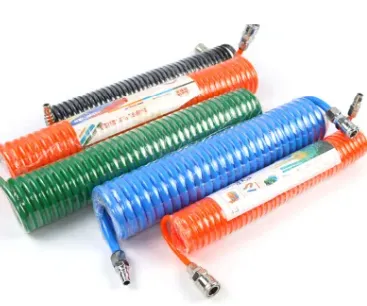lpg vapor hose
Understanding LPG Vapor Hose A Comprehensive Overview
Liquefied Petroleum Gas (LPG) is a widely used fuel source for various applications, ranging from heating and cooking to fueling vehicles. Its efficient energy output and cleaner-burning properties make it a popular choice for both residential and commercial users. However, the safety and reliability of LPG systems depend significantly on the quality of the components used, particularly the hoses that transport the vapor. This is where LPG vapor hose plays a crucial role.
What is LPG Vapor Hose?
LPG vapor hose is specifically designed to handle the transport of vaporized LPG. Unlike liquid LPG, which is typically transported via robust liquid hoses, vapor hoses are constructed to handle the gaseous state of the fuel. The design and materials used in these hoses are critical, given the unique properties of LPG, including its pressure and temperature variations.
Composition and Construction
LPG vapor hoses are generally made from synthetic rubber or thermoplastic materials that can withstand high pressures and temperatures. Commonly, these hoses feature multiple layers, including an inner tube, reinforcement layer, and outer cover. The inner tube is designed to resist permeation and ensure that the gas does not leak into the environment. The reinforcement layer provides strength and flexibility, while the outer cover protects against environmental factors like UV exposure, chemicals, and abrasion.
Safety Standards and Regulations
Due to the flammable nature of LPG, the production and use of vapor hoses are subject to stringent safety standards and regulations. These standards ensure that the hoses meet specific performance criteria, including resistance to bursting, kink resistance, and resilience against extreme temperatures. Organizations such as the National Fire Protection Association (NFPA) and the American National Standards Institute (ANSI) enforce these regulations to help prevent accidents and ensure the safe handling of LPG.
lpg vapor hose

Installation and Maintenance Considerations
Proper installation of LPG vapor hoses is essential to optimize safety and performance. Users are encouraged to follow manufacturer guidelines and industry best practices during installation. This may include ensuring the correct routing of the hoses to minimize the risk of kinks and abrasion, which can lead to failure.
Regular maintenance and inspections are also crucial. Users should routinely check for signs of wear, such as cracks, blisters, or leaks. Any damaged hoses should be replaced immediately to prevent potential hazards. It's advisable to keep spare hoses on hand and ensure they are compliant with current safety standards.
Applications of LPG Vapor Hose
LPG vapor hoses find application in various settings, including residential gas systems, commercial kitchens, industrial heating applications, and automotive fuel systems. In residential settings, they connect the gas supply to appliances, such as stoves, water heaters, and heating systems. In commercial kitchens, these hoses ensure a reliable supply of gas for cooking equipment, while in industrial settings, they facilitate heating processes.
For vehicles designed to run on LPG, vapor hoses are critical components, connecting the fuel tank to the engine. Their ability to withstand high pressures and provide leak-proof service is vital for the safety of both the vehicle and its occupants.
Conclusion
In conclusion, LPG vapor hoses play an indispensable role in the safe and efficient transport of liquefied petroleum gas. Understanding their composition, construction, safety standards, and maintenance practices is essential for anyone involved in the handling or usage of LPG. With proper care and adherence to safety regulations, LPG vapor hoses can provide reliable service, ensuring that this valuable energy source can be used safely and effectively in various applications. Investing in high-quality hoses and regular maintenance will ensure that your LPG system remains functional and safe for years to come.
-
Welded Wire Mesh Panel: Durable, Versatile, and AffordableNewsJul.28,2025
-
Top Quality Oxy Acetylene Hoses for Sale Fit for Welding DemandsNewsJul.28,2025
-
The Future of Pneumatic Air Tubes in IndustryNewsJul.28,2025
-
Superior and Reliable LPG Hose Pipe Solutions for Every NeedNewsJul.28,2025
-
Exceptionally Durable and Versatile Premium Braided PVC TubingNewsJul.28,2025
-
Best Adapters for Connecting Garden Hose to PVC Pipe ConnectionsNewsJul.28,2025














